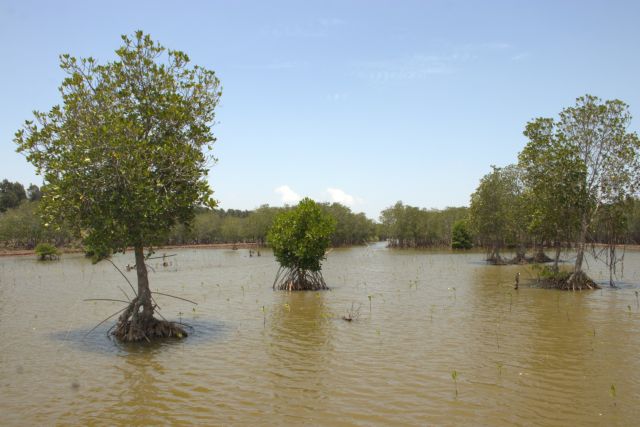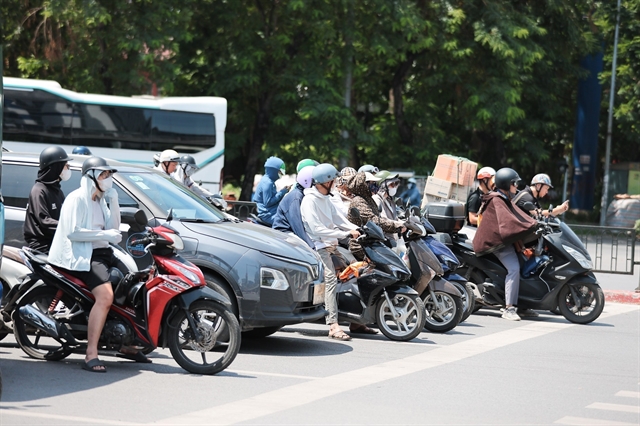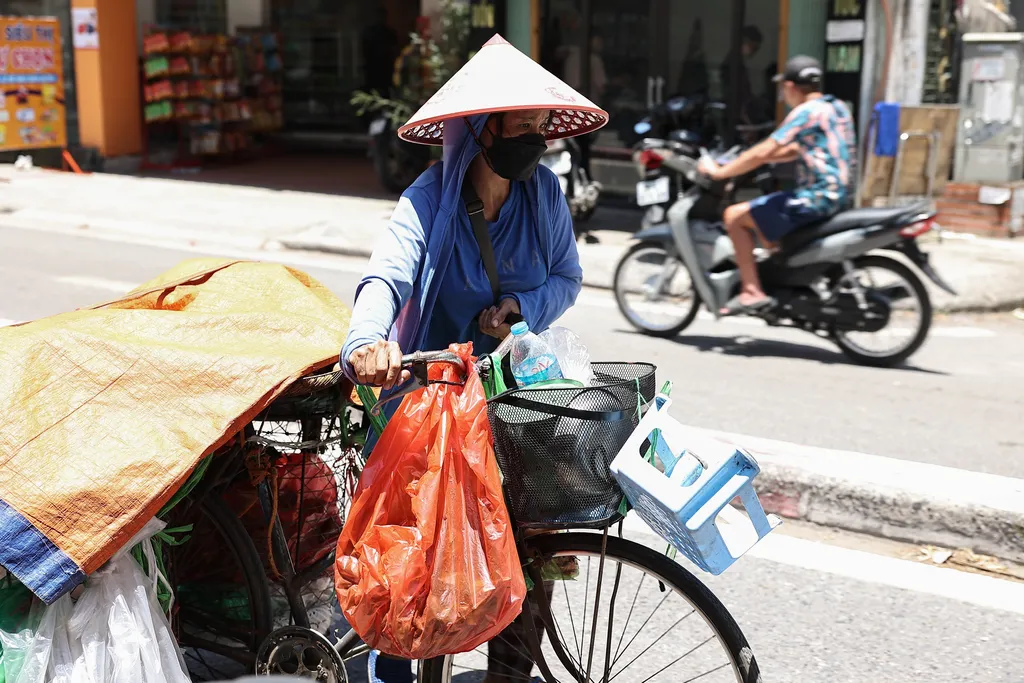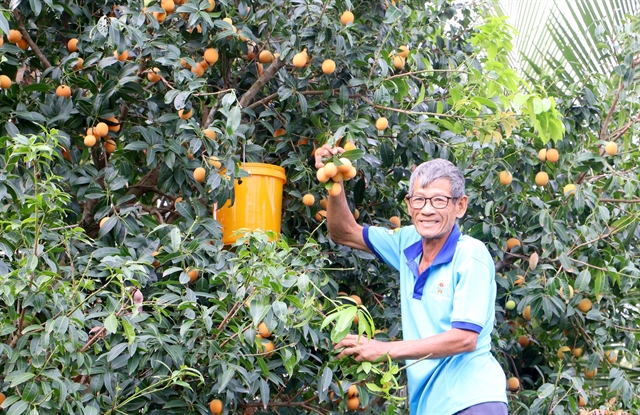 Environment
Environment

 |
| People use masks and sun protective clothing to avoid the heat in Hà Nội. — VNA/VNS Photo Lê Đông |
HÀ NỘI — A strong low-pressure area in the west has brought intense heat to the north, making temperatures in Hà Nội hit the highest in all of Việt Nam, even surpassing 'traditionally' hot areas like Nghệ An and Thanh Hóa provinces in central Việt Nam.
On Sunday, aside from Lai Châu and Điện Biên provinces, severe heat baked the entire northern, north central and south central coastal regions, with the highest temperatures ranging between 36 and 38 degrees Celsius, with some places even reaching over 39.
The Láng measuring station in Hà Nội and the Hòa Bình measuring station in Phú Thọ Province recorded the highest temperatures on Sunday at 39.7 degrees.
At the Sơn Tây measuring station in the capital city, the highest temperature on Sunday was 39.5 degrees Celsius, while the Lạc Sơn Station in Phú Thọ Province reached 39.6, Phủ Lý Station in Ninh Bình Province recorded 39.3 and Hiệp Hòa Station in Bắc Ninh Province hit 38.7.
The three hottest places in the central region were Đô Lương in Nghệ An Province at 38.6 degrees, Hoài Nhơn in Gia Lai Province at 38.8 degrees and Tuy Hòa in Đắk Lắk Province at 39.3 degrees.
Head of the Weather Forecast Division under the National Centre for Hydrometeorological Forecasting (NCHMF) Nguyễn Văn Hưởng said that the north would see temperatures cool for at least two days on Wednesday and Thursday.
But according to forecasts, towards the end of the week starting on Friday, the region will experience widespread hot weather again.
The NCHMF noted that the temperature forecast in the weather bulletin and the actual temperature outdoors may differ by 2-4 degrees Celsius, or even higher depending on other factors, such as effects from concrete and asphalt roads.
 |
| People walk with umbrellas to shield from the scorching sun. VNA/VNS Photo |
Heavy downpours expected
The NCHMF forecasts that by Thursday, thunderstorms will appear in many areas in the north.
Hưởng said: "From Tuesday, the heat wave in the north will likely decrease gradually, while the heat wave from Thanh Hóa to Đà Nẵng and from Quảng Ngãi to Đắk Lắk and Khánh Hòa is expected to last for many days afterwards."
By Thursday, mountainous and midland areas in the north will see widespread heavy rains of 50-120mm, with some places getting over 250mm, according to forecasts.
Other places in the north will likely see rains of 30-80mm to over 150mm.
"Thunderstorms will occur in the late afternoon and at night. After a period of hot weather in the northern region, extreme phenomena like tornadoes, lightning storms, hail and strong winds can occur. In addition, thunderstorms will occur at sea, so tornadoes may be seen in the Gulf of Tonkin. Special attention should be paid in the next few days,” said Hưởng.
 |
| Informal workers grapple with intense sun and heat in the streets of Hà Nội. VNA/VNS Photo |
Response to typhoon
Deputy Minister of Agriculture and Environment Nguyễn Hoàng Hiệp has sent a letter to people's committees of several northern provinces and cities asking them to proactively respond to typhoons, such as Typhoon Wipha, which hit northern Việt Nam in late July.
In the past few weeks, mountainous northern provinces have experienced heavy rain, inundation, flash floods and landslides, causing serious damage to people, property and infrastructure, especially in Điện Biên and Sơn La provinces.
Localities are required to urgently assign resources to overcome the consequences of the recent typhoon and closely monitor forecasts and warnings about heavy rain, inundation and landslides to provide timely and complete information to authorities at all levels along with residents.
Deputy Minister Hiệp requested localities to form task forces to inspect and review residential areas along rivers, streams and low-lying areas, and organise evacuation to safe places.
In particular, assigning forces to guard, support and guide vehicles, especially at culverts, spillways or areas where deep flooding or landslides have occurred or are at risk of occurring would be necessary.
If conditions are unsafe, authorities must prohibit people and vehicles from passing.
Works under construction, especially small reservoirs that are full of water, must also be inspected.
Localities must arrange forces to be ready to handle possible emergency situations.
The Ministry of Agriculture and Environment also requested that northern provinces proactively take measures to prevent flooding, protect production, industrial parks and urban areas, and regularly report to the ministry through the Department of Dike Management and Disaster Prevention and Control. — VNS




